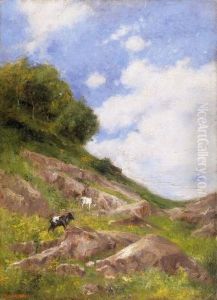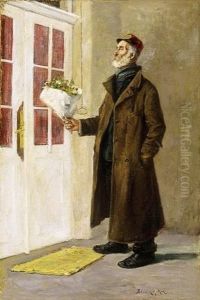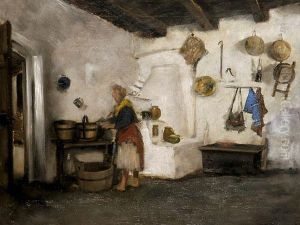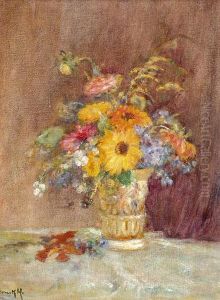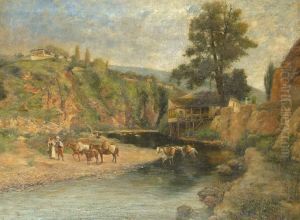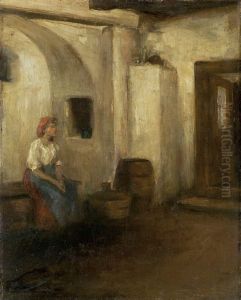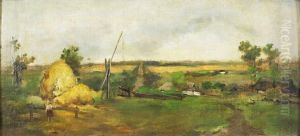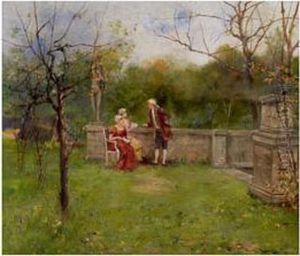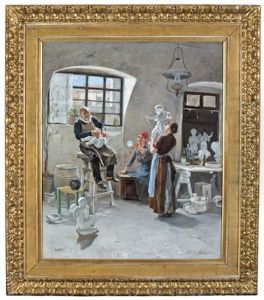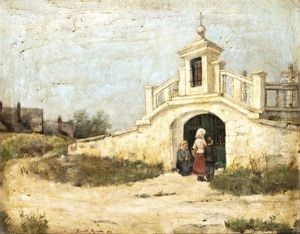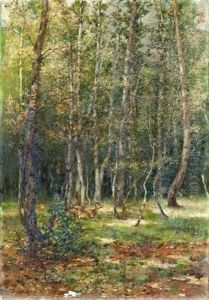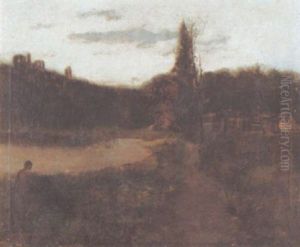Miksa Bruck Paintings
Miksa (Max) Bruck was a Hungarian photographer born on June 1, 1841, in Pest, which later became part of Budapest, Hungary. He was one of the most significant and influential photographers in Hungary during the second half of the 19th century. Bruck's work is characterized by its technical proficiency, artistic sensibility, and the wide range of subjects he captured.
Bruck started his career as a photographer after finishing his studies in painting and photography in Vienna, Austria. He opened his first studio in Pest in 1862, and his business quickly flourished, partly due to his innovative approaches to photography and his ability to capture the spirit of the age. Bruck became known for his portraits, which were often of notable figures from the realms of politics, culture, and society. His work was not limited to portraiture, however; he also took an interest in architectural and landscape photography, documenting the rapid changes in the urban landscape of Budapest as well as the Hungarian countryside.
Throughout his career, Bruck's studio became a gathering place for intellectuals and artists, and he was involved in the cultural life of Budapest. His photographs were exhibited in numerous exhibitions, both in Hungary and abroad, and he received several awards for his work. Bruck was also a pioneer in the use of new technologies and photographic processes, which contributed to the high quality of his images.
Miksa Bruck's contributions to Hungarian photography extended beyond his own artistic work. He was an educator who trained many young photographers, thus helping to establish photography as a respected profession in Hungary. Bruck's legacy includes not only his photographic oeuvre but also his influence on subsequent generations of Hungarian photographers.
He passed away on March 28, 1910, in Budapest. Today, his photographs are considered important historical documents, as well as works of art, and are included in the collections of various museums and archives. They provide a valuable visual record of Hungarian society and urban development during a period of significant change and modernization.
